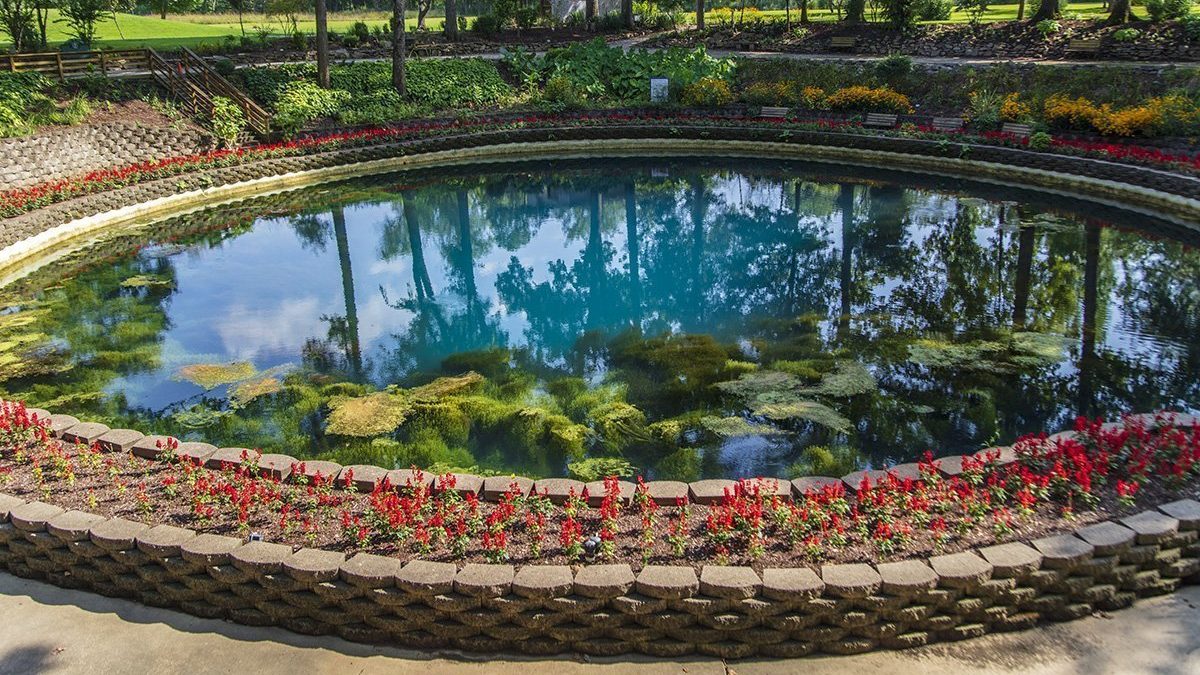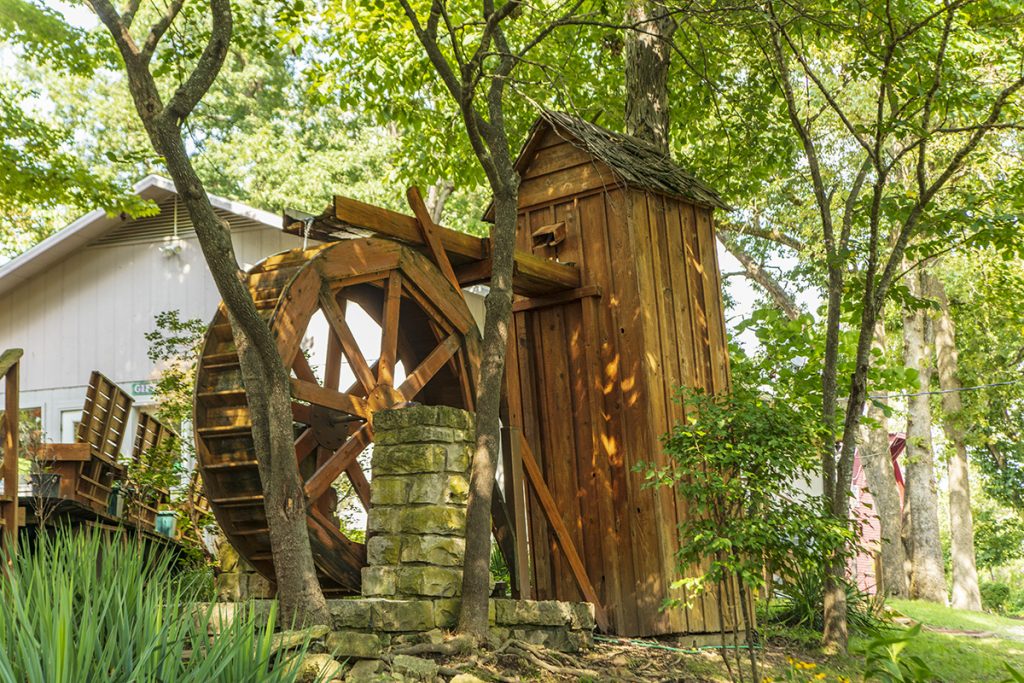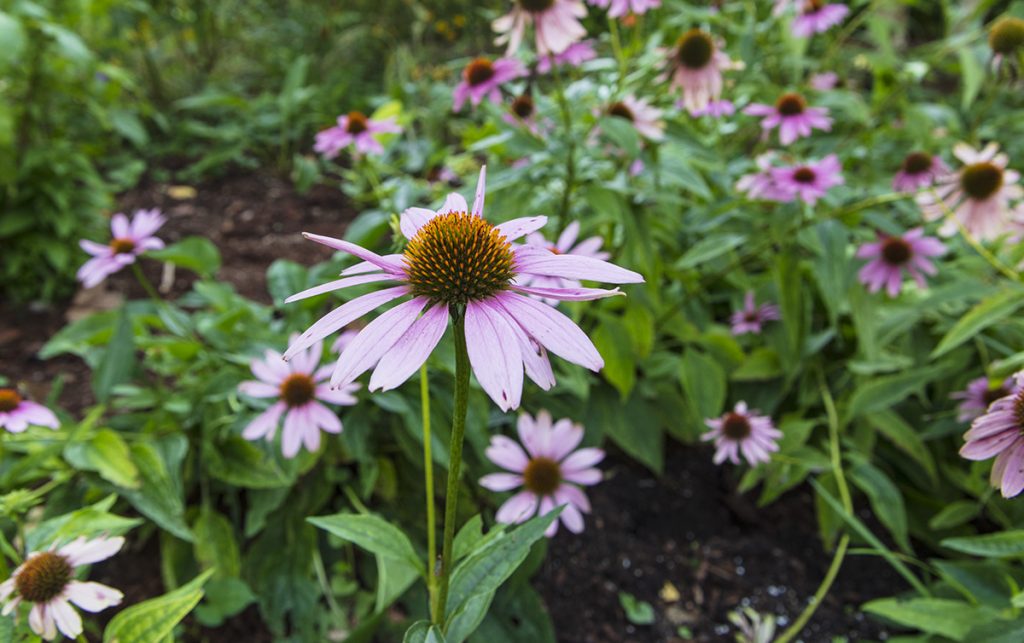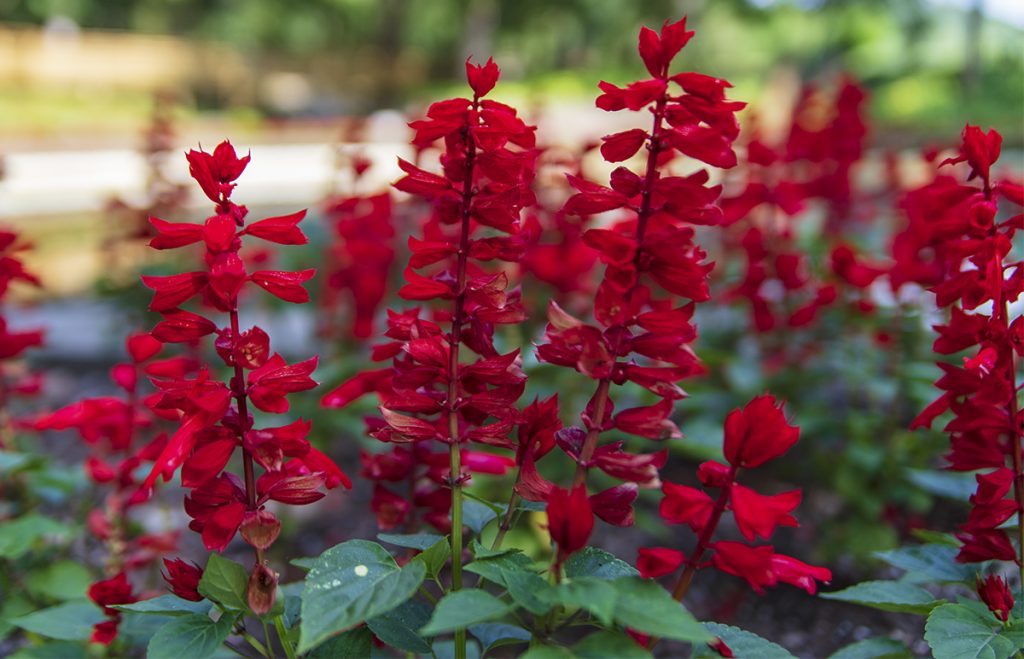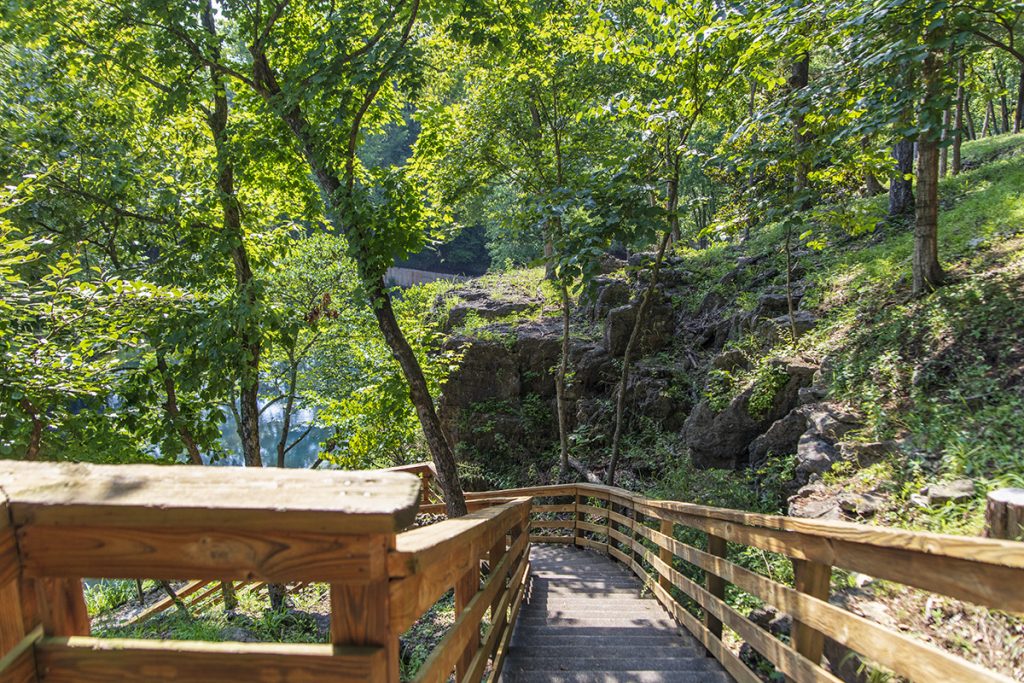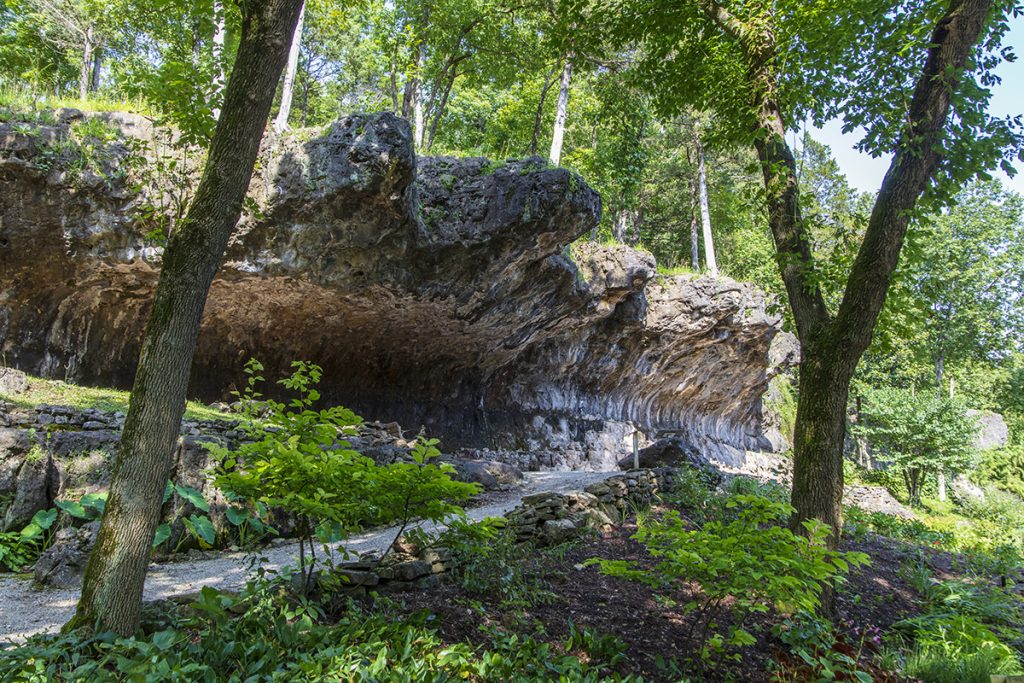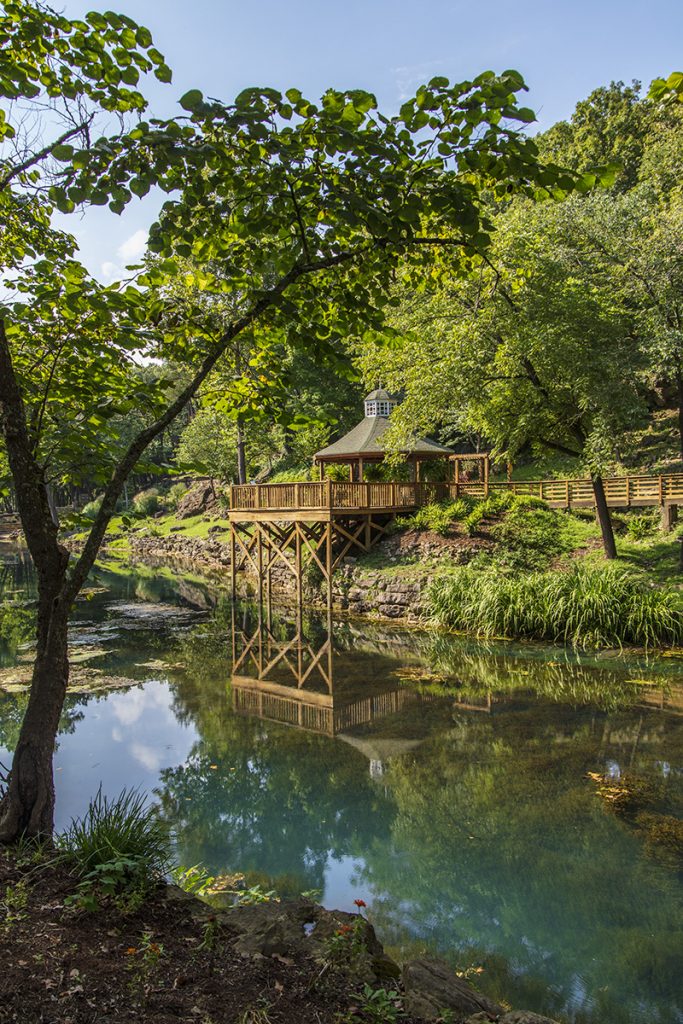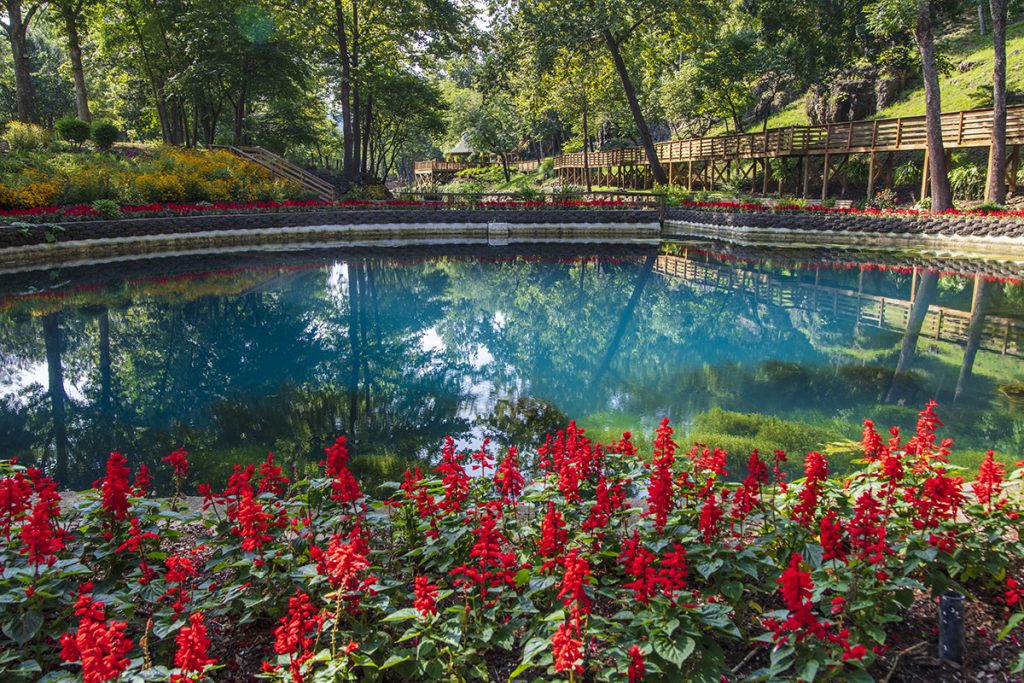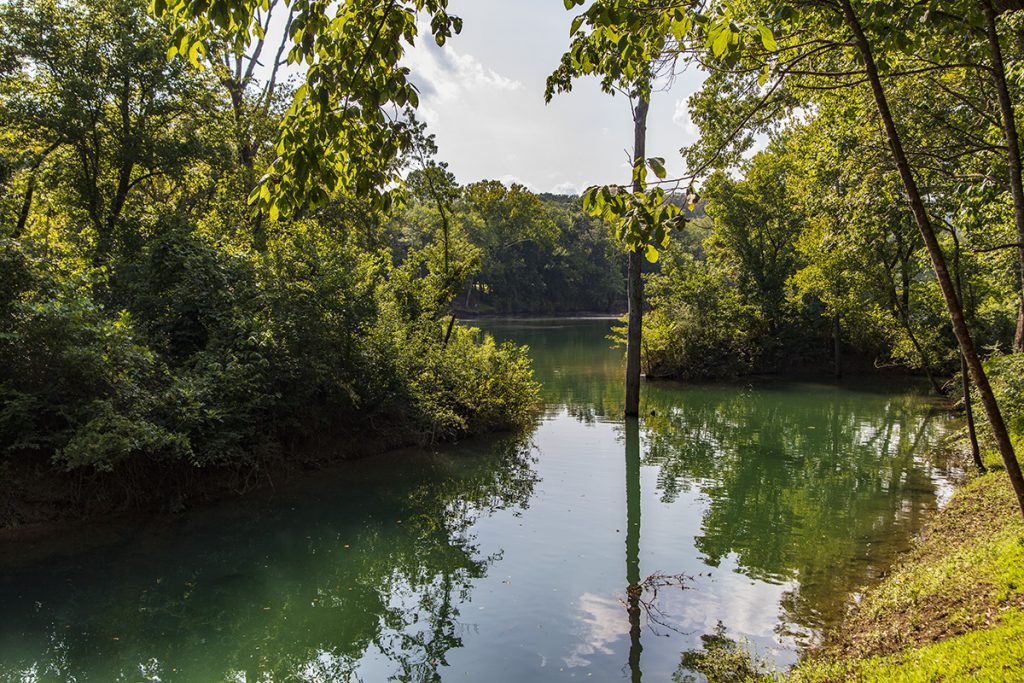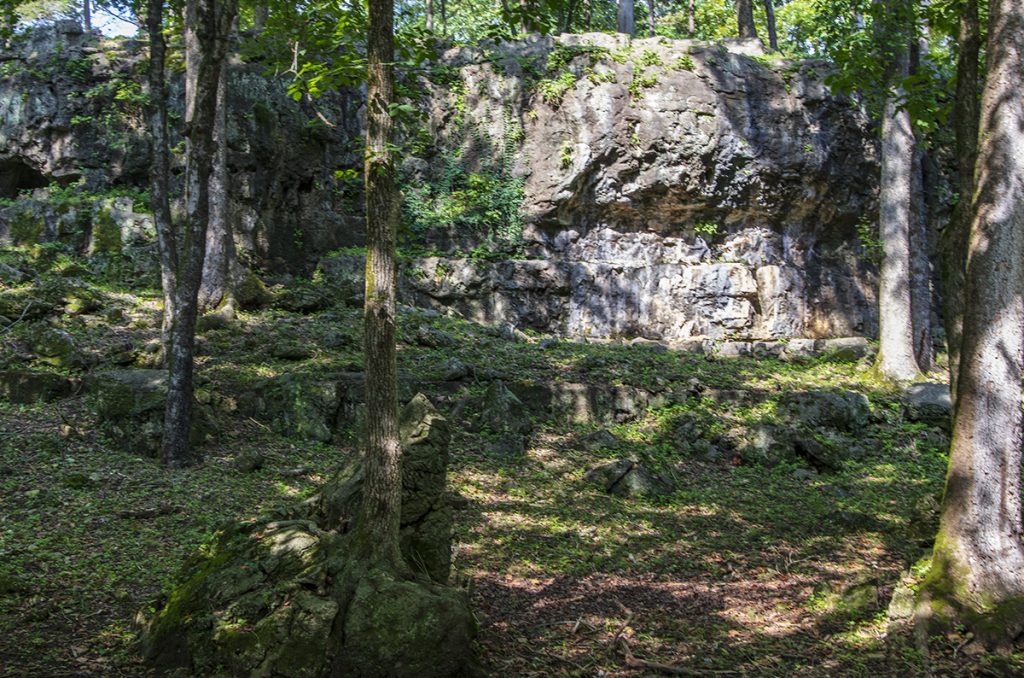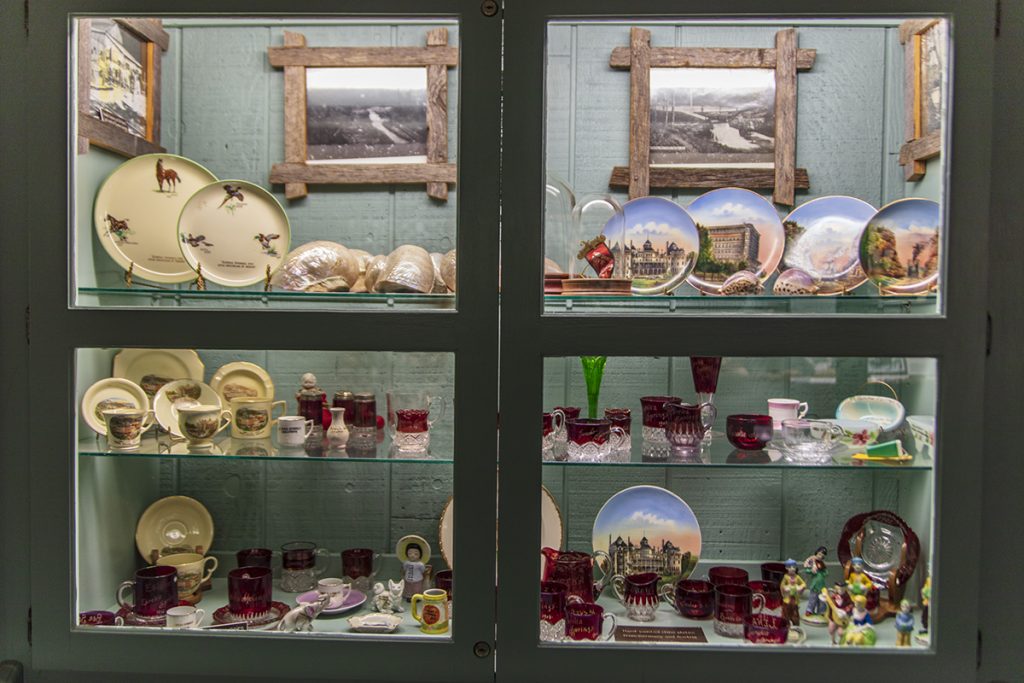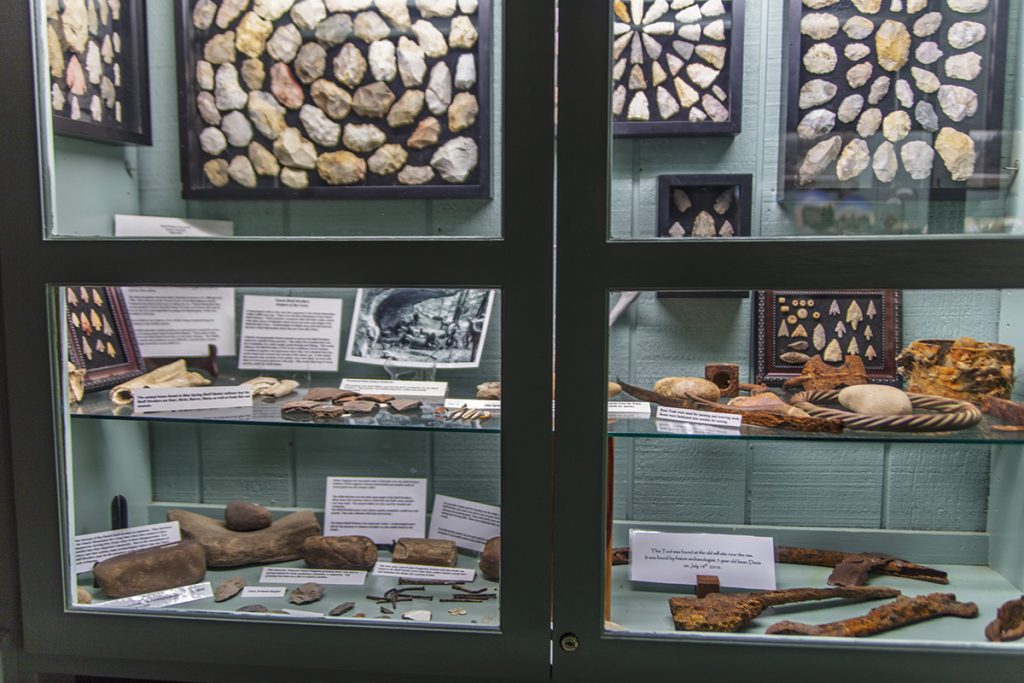Blue Spring Heritage Center in Eureka Springs, Arkansas is full of natural beauty and history. On a recent visit to Eureka Springs, we toured the spring and gardens. We also took a tour of the heritage center and learned about the history of this natural wonder.
To reach Blue Spring Heritage Center, follow US Highway 62 West out of Eureka Springs to County Road 210. There will be a sign on the right showing you where to turn.
Once you reach the Blue Spring Heritage Center, you can park in the large parking lot. You enter the grounds through the gift shop and pay the entrance fee. The fee is $9.75 per adult, $6.50 for kids 6-17, and free for children 5 and under. The grounds are also wheelchair accessible, so everyone can enjoy this attraction.
Once you leave the gift shop, you will see a large waterwheel. This water wheel is a representation of the way the mills at the spring used waterwheels to harness the power of the spring. There were both grain mills and a sawmill at the site in the past as settlers moved into this area of the Ozarks.
Gardens
Walking along the wooden stairways and paths, you see gardens with native plants and wildflowers everywhere you look. Many of the plants are labeled so you know what you are seeing.
Wooden Pathways
As you descend the stairs, you’ll see a rock overhang that was used as a shelter near the spring. This was used by early Native Americans as well as the later settlers that came to the spring. These natural shelters are abundant in the Ozarks region. We showed you one of the largest in the area in a previous post on the Indian Rockhouse Trail.
As you continue toward Blue Spring, there is a gazebo along the lagoon where. You can stop here to rest in the shade or watch the trout swimming in the cold, deep water.
Blue Spring
Continue a short distance further and you come to Blue Spring. The spring is surrounded by a wall that is planted with flowers. The red flowers contrast beautifully with the blue color of the spring water.
The spring discharges about 34 million gallons of water per day. The water is a constant 54 degrees. You can feel the coolness of the water when you get close to the spring. There is a walkway over the discharge chute where you can bend down and place your hand into the water and feel how cold the water is.
The spring is also ringed by gardens with natural plants and wildflowers for you to enjoy. The colors of the different flowers in the garden are really something to see.
Walking Out
Once you have enjoyed pausing at the spring, you can continue along the path on the other side of the lagoon. More wildflowers and native plants await you along the path. You may also hear boats on the White River, which is only a short distance from the spring. In fact, the water from the spring flows out to join the White River. This water eventually makes its way from the Ozarks all the way to the Gulf of Mexico. The water travels down the White River into the lakes along the river before it travels all the way to southeast Arkansas to join the mighty Mississippi River.
On the path out you can also see the rock garden. This is an example of the natural rock formations which occur all over the Ozarks.
Before you leave, be sure and visit the heritage center on your way out. There are displays of archeological items as well as historical items from the area. There are also videos that show the history of the spring and a dive which explored the spring.
For further information on Blue Spring Heritage Center, you can visit their website here. If you visit, be sure and tell them you saw the article on Lost In The Ozarks.
If you love to see natural springs, be sure and check out our posts on the Hodgson Water Mill and Mammoth Spring. Please follow our page or join the Lost In The Ozarks group on Facebook.
